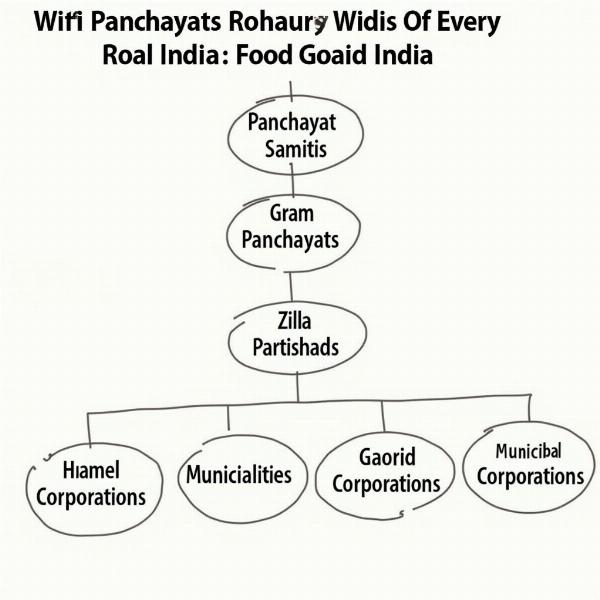Understanding the meaning of “local government” in Hindi is crucial for anyone navigating India’s administrative landscape. It refers to the governing bodies operating at a level below the national or state government, directly impacting citizens’ daily lives. These local bodies are responsible for essential services like sanitation, water supply, and local infrastructure development. This article dives deep into the meaning, types, and significance of local government in India, providing a comprehensive understanding for both residents and those interested in Indian governance.
Decoding “Local Government” in Hindi
The most common Hindi equivalent for “local government” is स्थानीय सरकार (sthaniya sarkar). “Sthaniya” means local, and “sarkar” denotes government. This term accurately captures the essence of decentralized administration. Other terms used include नगरपालिका (nagarpalika) for municipalities and पंचायत (panchayat) for village councils, reflecting the tiered structure of local governance in India. Understanding these terms unlocks a deeper appreciation of how local administration functions and impacts communities across the country.
 Local Government Structures in India
Local Government Structures in India
Types of Local Government in India
India’s local government system is multi-layered, with distinct bodies catering to urban and rural areas. In rural areas, the Panchayati Raj System prevails, comprising Gram Panchayats at the village level, Panchayat Samitis at the block level, and Zilla Parishads at the district level. Urban areas are governed by Municipalities and Municipal Corporations, responsible for city administration. This structured approach ensures representation and localized decision-making across diverse communities.
Why is Local Government Important?
Local governments play a vital role in bridging the gap between citizens and higher levels of government. They are responsible for implementing government schemes at the grassroots level, ensuring local needs are addressed efficiently. Their proximity to communities allows them to respond effectively to local issues and ensure citizen participation in governance.
Local Government and Community Development
Local governments are essential drivers of community development. They spearhead initiatives in areas like sanitation, healthcare, education, and local infrastructure. Through efficient resource allocation and implementation of targeted programs, they empower local communities and improve quality of life. For instance, local bodies play a key role in implementing national programs like Swachh Bharat Abhiyan (Clean India Mission) at the local level.
The Future of Local Government in India
The Indian government is continuously working towards strengthening local governance through various reforms. These include enhancing financial autonomy, promoting greater transparency, and fostering citizen engagement. The aim is to create a more robust and responsive system of local governance capable of addressing the evolving needs of a developing nation.
Conclusion
Understanding the “local government meaning in Hindi” (स्थानीय सरकार) goes beyond mere translation; it requires understanding its multifaceted role in Indian society. From providing basic amenities to driving community development, local governments are crucial for effective governance and citizen empowerment. As India continues its journey of progress, strengthening local governance remains a priority for inclusive and sustainable development.
FAQ
- What is the meaning of Nagar Nigam in Hindi? Nagar Nigam (नगर निगम) refers to Municipal Corporation, the highest level of urban local government in India.
- What is the role of Gram Panchayat? Gram Panchayat (ग्राम पंचायत) is the foundation of rural local government, responsible for village administration and development.
- How are local governments funded? Local governments receive funding from various sources, including state and central government grants, property taxes, and user fees.
- How can citizens participate in local governance? Citizens can participate by attending Gram Sabha meetings, engaging with local representatives, and participating in local development initiatives.
- What is the significance of 73rd and 74th constitutional amendments? These amendments provided constitutional status to Panchayati Raj and urban local bodies, respectively, strengthening local governance in India.
Meaning-Hindi.in is your trusted partner for accurate and culturally sensitive Hindi translation services. We specialize in various domains, including legal, technical, business, and academic translation. Our expert linguists ensure your documents are translated with precision and cultural relevance. Contact us today for your translation needs! Email: [email protected], Phone: +91 11-4502-7584. Meaning-Hindi.in is here to help bridge the communication gap!